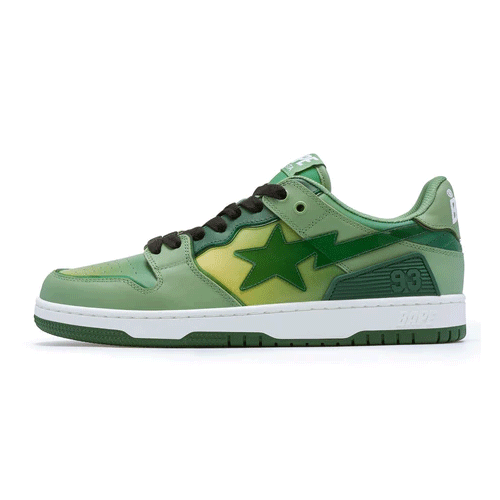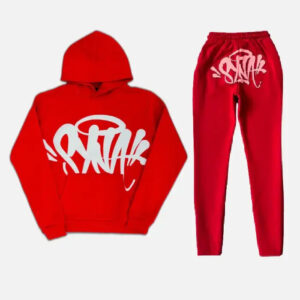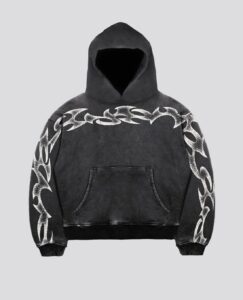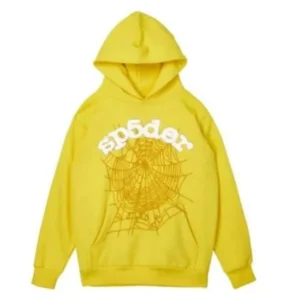Bapesta: The Iconic Sneaker That Shaped Streetwear Culture
The world of streetwear is full of iconic symbols, but few have left a mark as deep and lasting as...

The world of streetwear is full of iconic symbols, but few have left a mark as deep and lasting as the Bapesta sneaker. Born from the creative mind of Nigo, the founder of A Bathing Ape (BAPE), Bapesta has become a cornerstone in the sneaker game since its explosive debut in the early 2000s. It’s more than just a sneaker — it’s a cultural artifact, a fashion statement, and a testament to the blending of Japanese creativity with Western street style.
Whether you’re a seasoned sneakerhead or a curious newcomer to the streetwear scene, understanding the story and legacy of Bapesta is essential. Let’s dive into the origins, impact, and continued relevance of this standout silhouette.
The Origins of Bapesta: A Bold Step into Sneaker Culture
In the late 1990s and early 2000s, BAPE was already gaining cult status in Japan. Known for its camouflage patterns, shark hoodies, and limited-edition drops, the brand had carved out a niche that married exclusivity with cultural cool. But in 2002, BAPE entered a new domain: footwear.
The Bapesta sneaker was first introduced as part of BAPE’s growing lifestyle expansion. Modeled after the Nike Air Force 1 — a deliberate homage rather than a rip-off — Bapesta featured a similarly chunky sole and upper silhouette. However, where it really stood out was in the details: glossy patent leather finishes, vibrant colorways, and the unmistakable shooting star logo (replacing the Swoosh).
This wasn’t just another sneaker. It was a reimagining of an American classic, filtered through the lens of Japanese street fashion.
Controversy and Copycat Accusations
From the moment Bapesta hit the market, comparisons to the Nike Air Force 1 were inevitable. The similarities were undeniable, and it didn’t take long for accusations of copying to surface. Yet, within the fashion community, the line between homage and imitation was a grey one. In Japan, where reinterpretation and remixing of cultural elements is a common artistic method, Bapesta was seen more as an innovative spin than theft.
What added legitimacy to the Bapesta’s rise was its endorsement by Western hip-hop artists. Pharell Williams, Kanye West, and Soulja Boy proudly wore and collaborated with BAPE, introducing the sneaker to a global audience and blurring cultural boundaries. The Bapesta wasn’t just Japanese — it was international.
Rise of the Hype: Collaborations and Celebrity Endorsements
One of the key drivers of Bapesta’s success was its appeal among celebrities and musicians. Pharrell Williams’ partnership with Nigo led to the creation of the Billionaire Boys Club (BBC) and Ice Cream brands — both heavily intertwined with BAPE’s aesthetic. Around the same time, Kanye West was often seen rocking Bapestas during his early career, further solidifying the shoe’s clout.
This celebrity backing helped elevate Bapesta beyond niche status. Streetwear fans around the world started coveting the sneaker, and resell prices began to skyrocket. Limited releases and exclusive collaborations only added to the hype. BAPE teamed up with the likes of Marvel, DC Comics, Coca-Cola, and Daft Punk, creating collectible sneakers that fused pop culture with fashion.
For internal linking, this section could be connected to articles about celebrity influence on sneaker trends or the history of streetwear collaborations.
Aesthetic Power: What Makes Bapesta Unique?
The Bapesta is visually bold — and that’s exactly the point. Unlike minimalistic sneakers that rely on subtlety, Bapestas are designed to turn heads. Their color schemes are often loud, featuring neon pinks, reflective silvers, bright blues, and multi-tone patterns. The materials range from classic leather to exotic textures like crocodile and snake-print.
The design also includes standout branding. The signature star — known as the “sta” — is instantly recognizable, often outlined or shadowed to create depth. Add to that the signature BAPE logo and tongue tag, and you’ve got a sneaker that’s instantly identifiable.
For sneaker collectors and fashion-forward individuals, this aesthetic makes the Bapesta a versatile statement piece. Whether worn casually or styled into a full streetwear fit, it exudes individuality.
The Fall and Resurgence of Bapesta
Like many trends, Bapesta experienced a decline in the mid-2010s. BAPE itself went through changes, including the 2011 acquisition by Hong Kong fashion conglomerate I.T. As the brand shifted, so did its design focus. Bapesta releases became less frequent, and newer streetwear brands started to dominate the culture.
But fashion is cyclical. Over the past few years, Bapesta has enjoyed a resurgence. With vintage fashion and early-2000s nostalgia making a comeback, the Bapesta has re-entered the conversation. New collaborations with artists like Kid Cudi, Lil Yachty, and brands like Comme des Garçons and Coach have helped reintroduce the shoe to a younger generation.
This revival also owes much to social media. Platforms like Instagram and TikTok have fueled retro sneaker trends, and influencers often highlight Bapestas as a must-have throwback.
How to Style Bapesta Sneakers Today
Styling Bapestas today is all about embracing boldness. The key is to let the sneaker speak without overwhelming the outfit. Since Bapestas come in high-impact designs, they pair well with simple silhouettes: cargo pants, distressed denim, oversized hoodies, or cropped jackets.
You’ll often see street style icons match a pair of red or blue Bapestas with neutral tones to make the shoes pop. For a more daring look, fashion-forward dressers sometimes color-match their entire outfit to the sneakers, leaning fully into the maximalist aesthetic.
A helpful internal link here would be to a sneaker styling guide or how to wear statement sneakers.
Where to Buy Bapestas: Navigating the Market
Due to their rarity and collectible nature, authentic Bapestas can be hard to find — especially older models. Retail drops happen through A Bathing Ape’s official stores and website, but popular colorways often sell out quickly.
The resell market, through platforms like StockX, GOAT, and Grailed, offers a chance to find vintage pairs, though prices can vary dramatically depending on condition and rarity. Fake Bapestas are unfortunately common, so it’s crucial to authenticate purchases carefully.
For those entering the game now, newer releases provide an affordable and more accessible entry point, especially for fans of modern collaborations.
Bapesta’s Place in Fashion History
To understand Bapesta is to understand the fusion of East and West in streetwear. It represents an era when Japanese designers, inspired by American hip-hop and sneaker culture, created something wholly original. Even in the face of criticism, the Bapesta thrived because it tapped into authenticity — it wasn’t pretending to be Nike. It was BAPE, and it knew its audience.
Today, Bapesta is as much a symbol of nostalgia as it is a future-forward piece of fashion history. It stands beside other iconic shoes like the Air Jordan 1, Yeezy Boost 350, and Nike Dunk SB, holding its own in the sneaker hall of fame.
Final Thoughts: Why Bapesta Still Matters
In a saturated market of sneaker drops and streetwear brands, Bapesta remains a beacon of individuality. It tells a story — of bold design, cross-cultural exchange, and the evolution of street fashion. Whether you wear them, collect them, or simply admire them from afar, Bapestas are more than a trend. They’re a legacy.
If you’re building a sneaker rotation or exploring streetwear history, the Bapesta deserves your attention. It’s loud, proud, and unapologetically original — just like the culture it came from.







